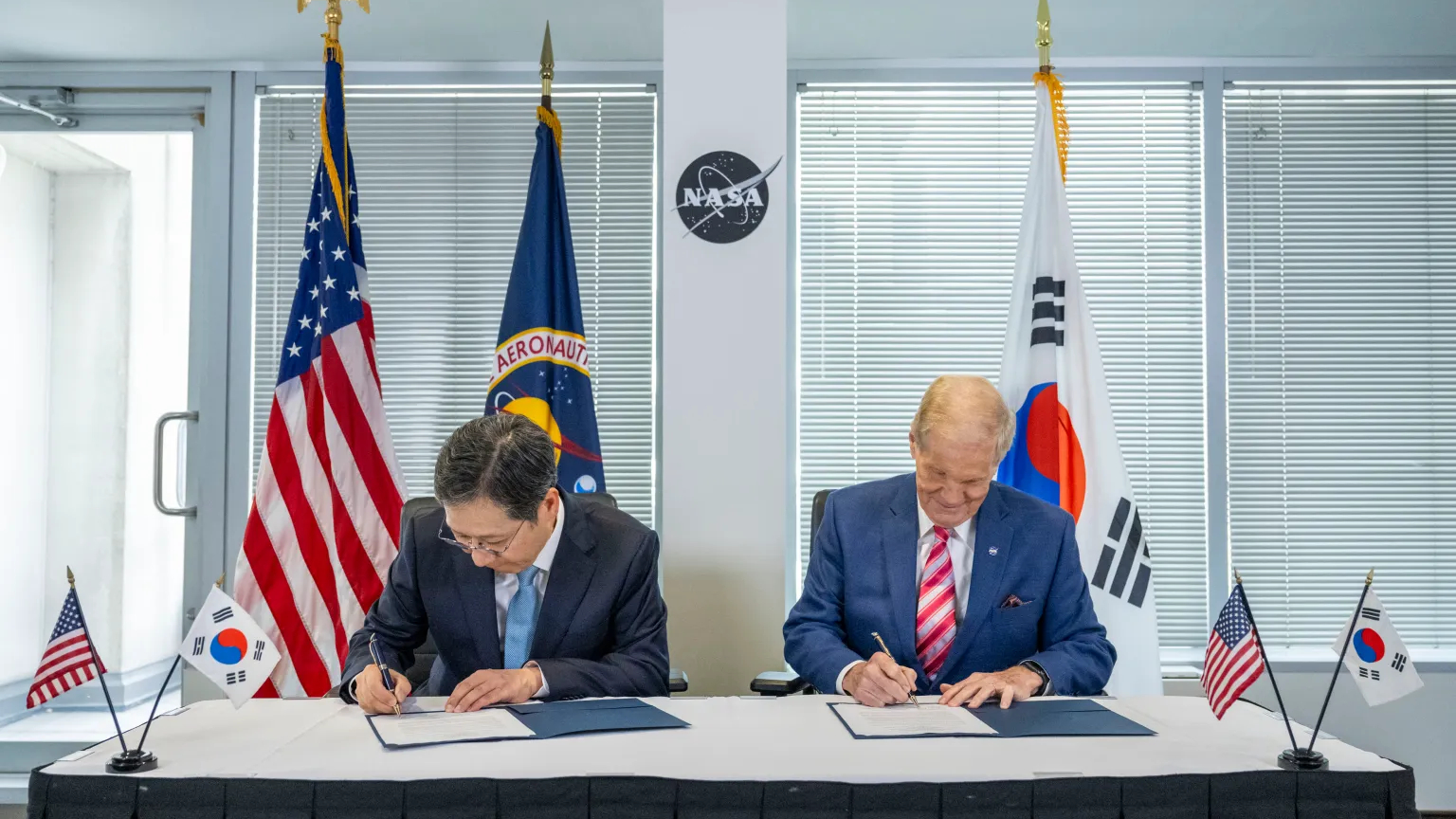NASA, South Korea plan mission to unexplored region of deep space
NASA and KASA will work together on a mission to an unexplored region of space.

NASA and South Korea's space agency have agreed to deeper cooperation in space exploration, science and aeronautics, including collaboration on a pioneering mission.
NASA and the Republic of Korea's newly created Korea AeroSpace Administration (KASA) signed a joint statement on advance cooperation on Sept. 19.
Areas of potential cooperation include NASA's Moon to Mars Architecture, space life sciences and medical operations, lunar surface science, utilization of Korea's deep-space antenna and future commercial activities in low Earth orbit, according to a NASA statement.
"Building on years of work together both on Earth and in space, we are proud to significantly grow our partnership with the Republic of Korea and its new space agency," said NASA Administrator Bill Nelson during a signing ceremony.
Related: South Korea creates new KASA space agency, sets sights on the moon and Mars
"The signing of the joint statement marks a pivotal moment in opening a new chapter for the Republic of Korea-U.S. aerospace alliance," said KASA Administrator Youngbin Yoon. "It presents a vital opportunity for Korea to emerge as a responsible space-faring nation, and also for humanity to pursue scientific discoveries and pioneer the future."
One area of new collaboration will be a mission to the sun-Earth Lagrange Point 4, a hitherto unexplored gravitationally stable point in space where the influences of the sun and Earth balance out.
Breaking space news, the latest updates on rocket launches, skywatching events and more!
Spacecraft such as the James Webb Space Telescope (JWST) have been sent to L2, on the far side of Earth with regard to the sun, while DSCOVR and others operate at L1, around 930,000 miles (1.5 million kilometers) inside the orbit of Earth. But L4, a location 60 degrees in front of Earth in its orbit, has not been visited.
KASA wants to set up a solar wind observation station at L4, aiming to boost understanding of space radiation, South Korean outlet The Chosun reported. NASA and KASA will conduct joint research on data transmission, optical communications and the use of relays at L4, according to the report. There was no indication of a potential launch date for the prospective mission.
Further agreements on NASA-KASA cooperation could follow regarding NASA's Artemis program, the report states. The pair have already collaborated on South Korea's Danuri lunar orbiter, while KASA is currently targeting its first robotic lunar landing by 2032.

Andrew is a freelance space journalist with a focus on reporting on China's rapidly growing space sector. He began writing for Space.com in 2019 and writes for SpaceNews, IEEE Spectrum, National Geographic, Sky & Telescope, New Scientist and others. Andrew first caught the space bug when, as a youngster, he saw Voyager images of other worlds in our solar system for the first time. Away from space, Andrew enjoys trail running in the forests of Finland. You can follow him on Twitter @AJ_FI.
